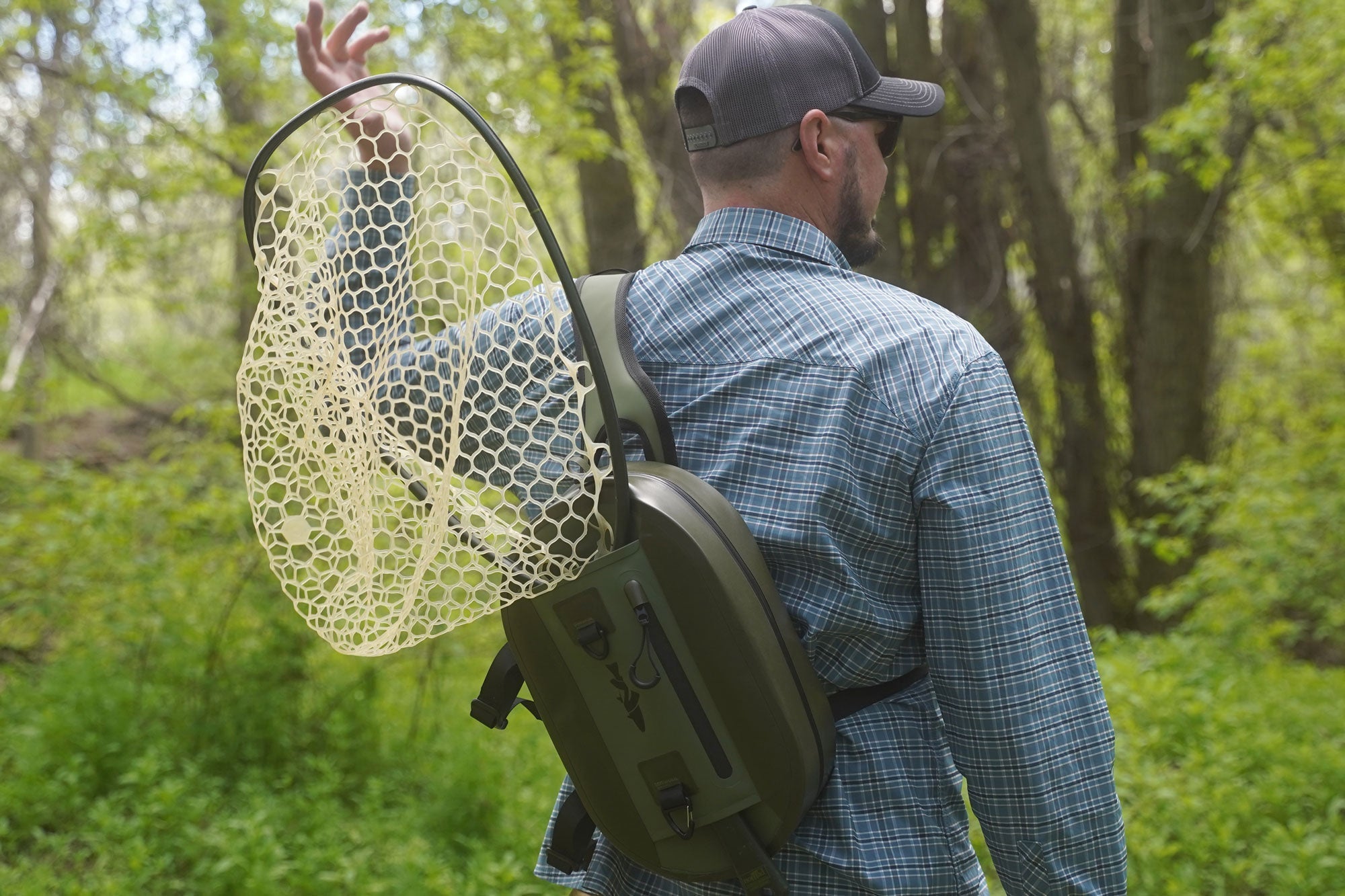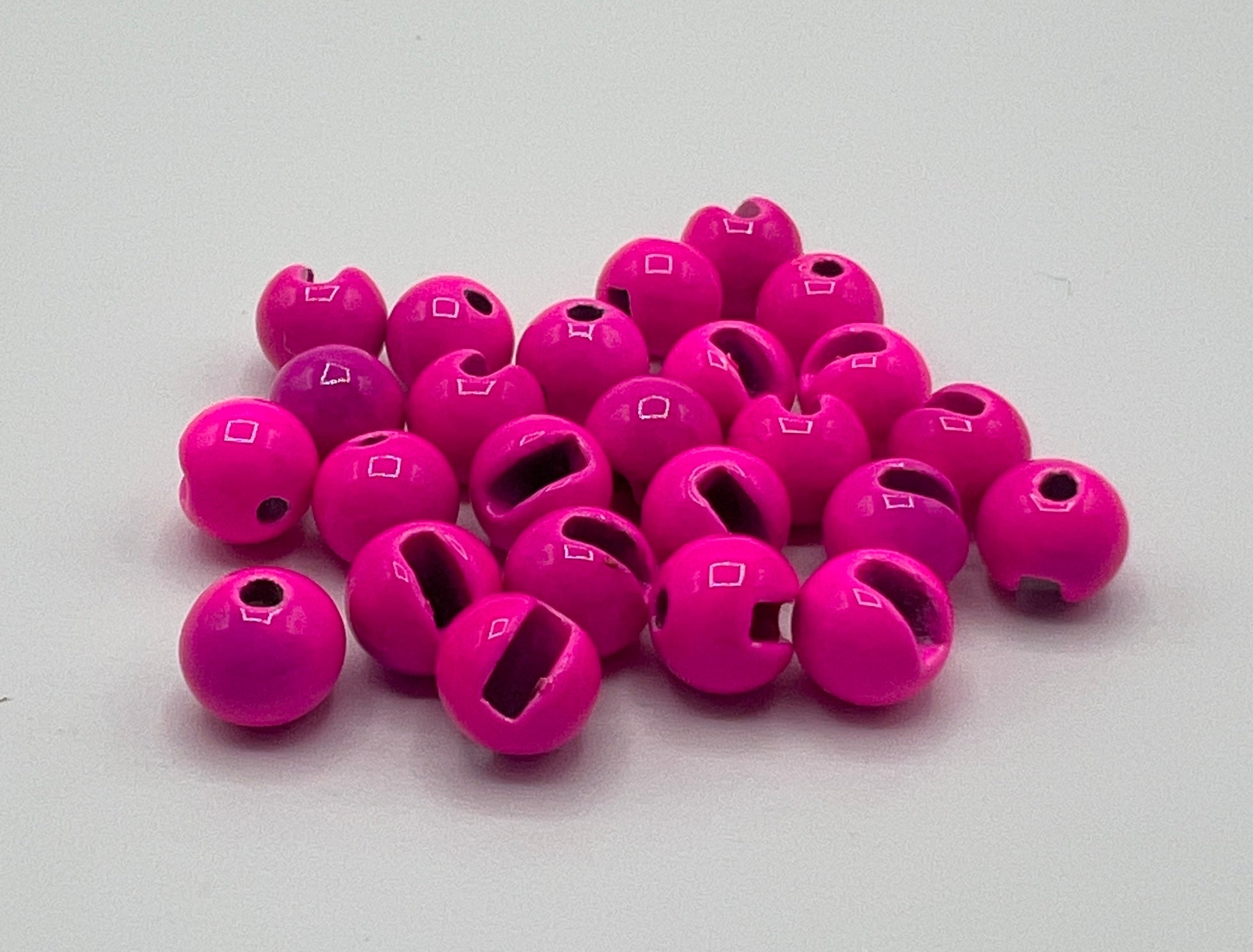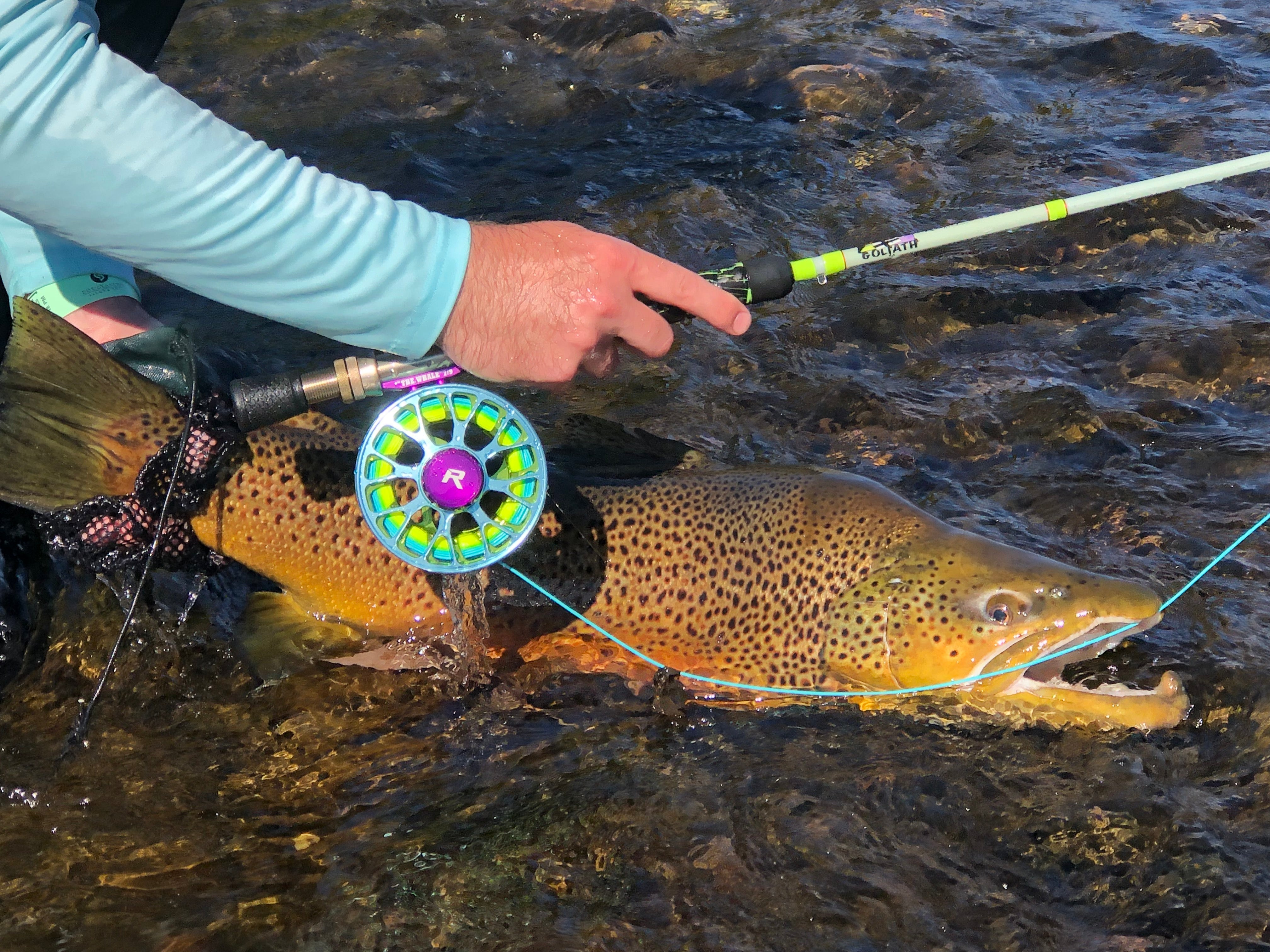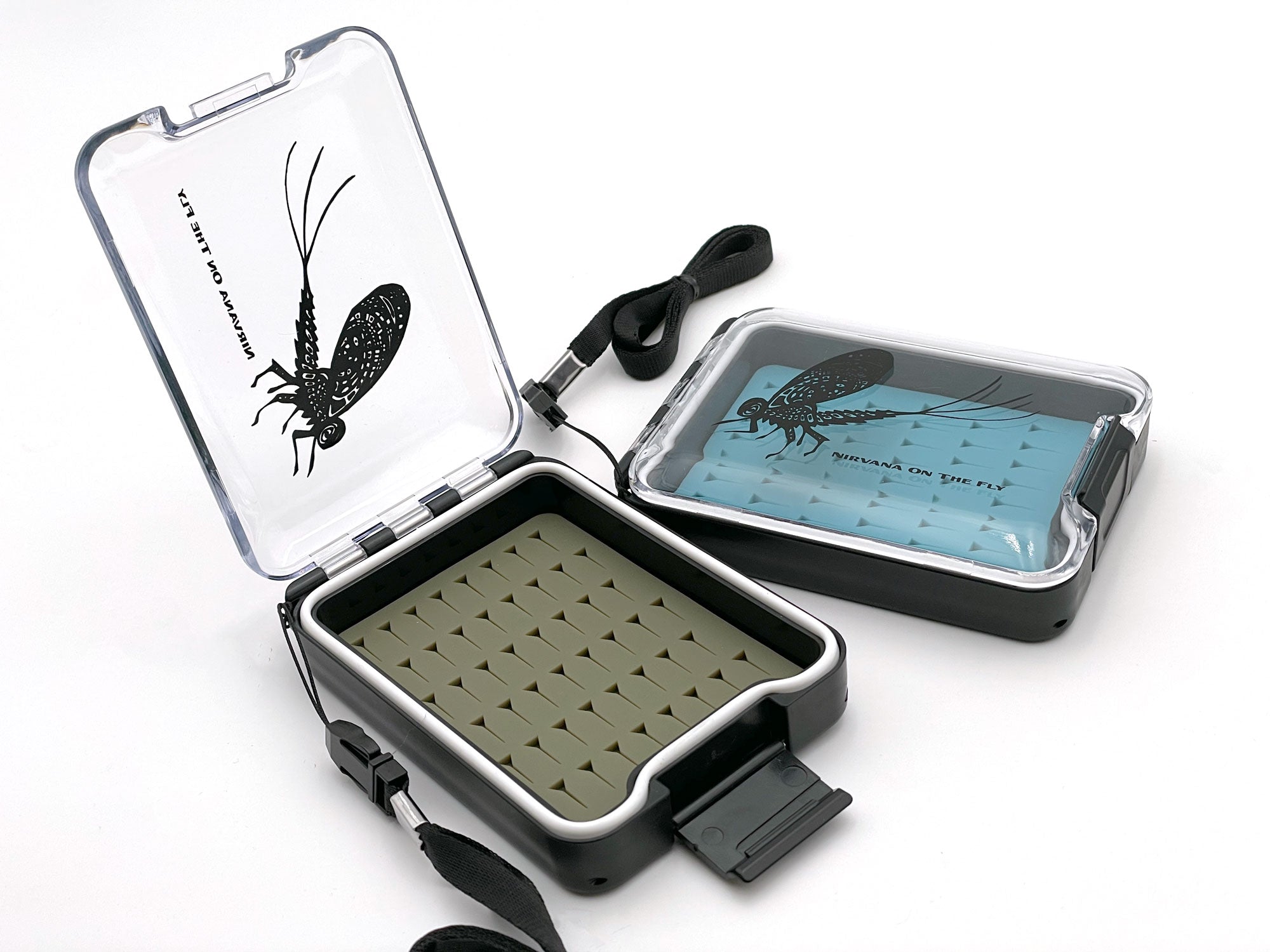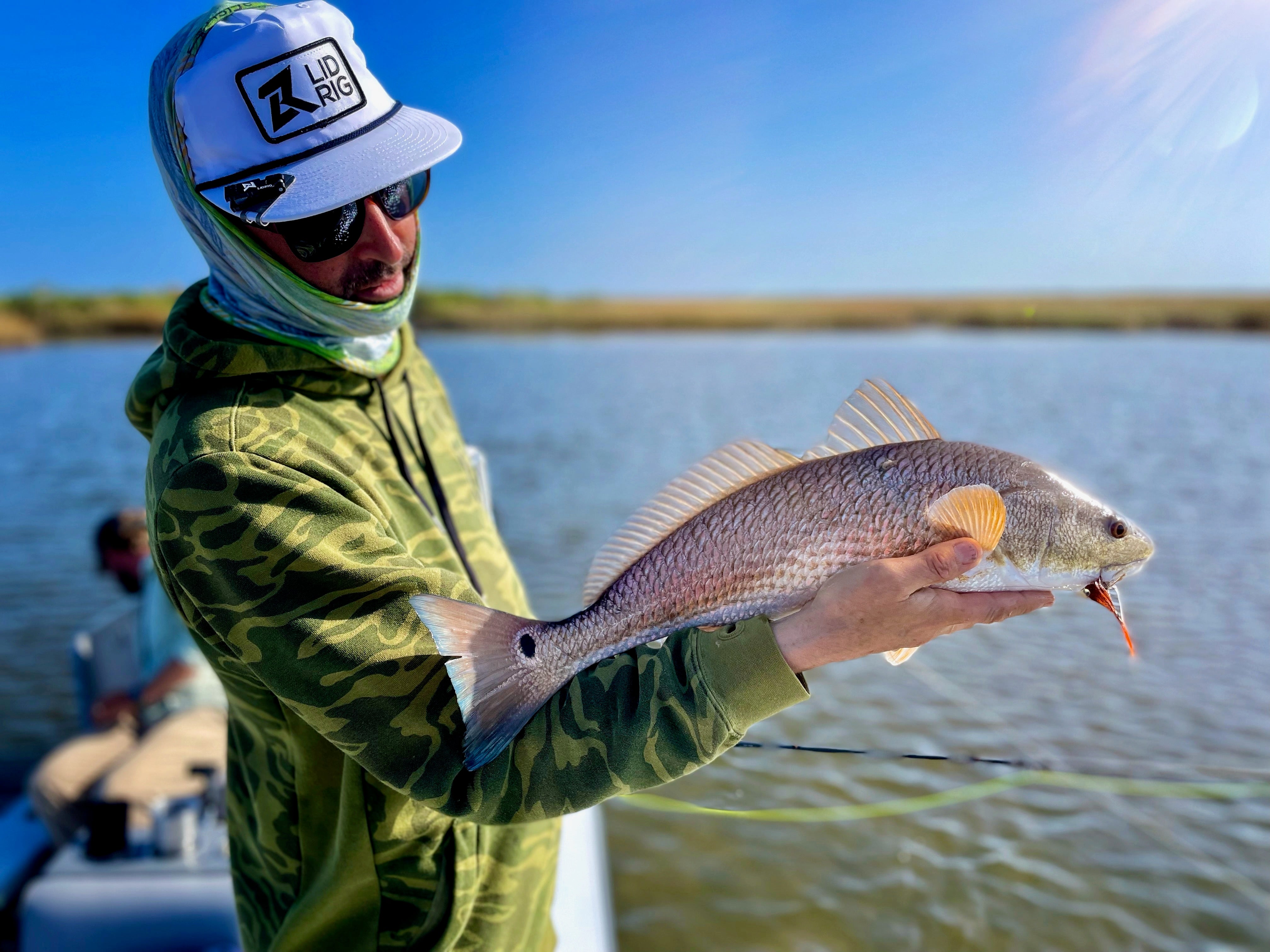The Articulation Revolution: When Flies Come Alive
Articulated streamers represent the greatest innovation in fly fishing since the development of synthetic materials. These jointed patterns create lifelike swimming action that traditional single-hook streamers simply cannot match, triggering predatory responses from even the most selective trout. The undulating, serpentine movement of properly designed articulated flies mimics real baitfish so convincingly that fish often strike with unusual aggression.
This comprehensive guide covers everything from basic articulation principles to advanced multi-segment patterns, teaching you to tie, fish, and modify articulated streamers for maximum effectiveness in any water condition.
WATCH: Articulated streamer techniques and presentations
Understanding Articulation Principles
How Articulation Works
Joint Mechanics:
- Flexible Connection: Allows independent movement between sections
- Natural Action: Creates realistic baitfish swimming motion
- Current Response: Reacts naturally to water flow
- Retrieve Animation: Comes alive during retrieve
- Three-Dimensional Movement: Moves in all planes like real fish
Movement Dynamics:
- Undulation: Side-to-side swimming motion
- Flexibility: Bends and flexes with current and retrieve
- Segmentation: Each section moves independently
- Realistic Profile: Maintains baitfish silhouette while moving
- Trigger Action: Movement triggers predatory strikes
Types of Articulation
Two-Section Patterns:
- Simple Design: Front and rear sections connected
- Easy Construction: Straightforward tying process
- Effective Action: Significant improvement over single hooks
- Versatile: Works for various baitfish imitations
- Beginner Friendly: Good introduction to articulation
Multi-Section Designs:
- Complex Movement: Multiple joints create more realistic action
- Advanced Construction: Requires sophisticated tying skills
- Maximum Realism: Closest imitation to real baitfish
- Specialty Applications: For extremely selective fish
- Expert Level: Requires significant experience
Hybrid Systems:
- Combination Approaches: Mix articulation with other features
- Trailer Integration: Combine with trailing materials
- Weight Distribution: Strategic weight placement for action
- Material Combinations: Mix hard and soft materials
- Innovation: Modern approaches to classic principles
Essential Articulated Patterns
Classic Articulated Designs
Sculpzilla:
- Target Species: Large sculpin imitation
- Construction: Two-hook articulated design
- Action: Realistic bottom-dwelling movement
- Materials: Natural sculpzilla dubbing and rubber legs
- Effectiveness: Proven big fish producer
Drunk and Disorderly:
- Innovation: Kelly Galloup's revolutionary mouse pattern
- Action: Incredible lifelike swimming motion
- Materials: Deer hair and rabbit strip combination
- Versatility: Works surface and subsurface
- Results: Consistent trophy fish producer
Circus Peanut:
- Design: Simple but effective articulated pattern
- Materials: Foam and rabbit strip construction
- Action: Excellent swimming motion
- Colors: Multiple color combinations available
- Application: Versatile for various situations
Double Bunny:
- Classic: Traditional articulated rabbit pattern
- Materials: Rabbit strips and marabou
- Action: Natural undulating movement
- Sizes: Available in multiple hook sizes
- Proven: Decades of proven effectiveness
Modern Articulated Innovations
Game Changer:
- Innovation: Blane Chocklett's revolutionary design
- Action: Incredible realistic swimming motion
- Materials: Advanced synthetic materials
- Versatility: Multiple species imitations possible
- Effectiveness: Tournament and guide proven
Dirty Hippie:
- Design: Modern materials with classic action
- Construction: Advanced articulation system
- Materials: Synthetic and natural combination
- Action: Lifelike baitfish movement
- Applications: Versatile for various water types
Articulated Leech:
- Target: Leech and baitfish imitation
- Action: Realistic leech swimming motion
- Materials: Rabbit and marabou combination
- Colors: Natural leech color variations
- Effectiveness: Excellent for lake fishing
Peanut Envy:
- Innovation: Advanced foam articulated design
- Buoyancy: Strategic foam placement for action
- Materials: Modern foam and fur combination
- Action: Unique swimming characteristics
- Results: Consistently effective pattern
Check out these patterns from First Cast Flies
Seasonal Articulated Patterns
Spring Patterns:
- Pre-Spawn: Large patterns for aggressive fish
- Natural Colors: Match early season baitfish
- Deep Running: Patterns that get deep quickly
- Proven Designs: Stick with established patterns
- Size Options: Various sizes for different conditions
Summer Articulated Flies:
- Heat Tolerance: Materials that perform in warm water
- Deep Water: Patterns for summer thermal refugia
- Night Patterns: Specialized patterns for dark fishing
- Structure Specific: Designed for summer cover
- Versatility: Patterns that work in multiple situations
Fall Trophy Patterns:
- Large Sizes: Biggest patterns of the year
- Aggressive Colors: Trigger fall feeding responses
- Baitfish Match: Imitate concentrating baitfish
- Proven Producers: Use patterns with track records
- Innovation: Try new patterns during peak season
WATCH: Tying articulated streamer patterns
Articulated Streamer Construction
Basic Articulation Techniques
Wire Connection:
- Stainless Steel: Use quality stainless steel wire
- Gauge Selection: Appropriate wire thickness for pattern size
- Connection Method: Secure attachment to both hooks
- Flexibility: Allow proper joint movement
- Durability: Connection must withstand fish stress
Loop-to-Loop Systems:
- Mono Construction: Heavy monofilament loops
- Flexibility: Maximum joint movement
- Quick Change: Easy pattern modification
- Strength: Adequate for large fish
- Reliability: Proven connection method
Shank Systems:
- Hook Shanks: Extended shank connections
- Material Options: Various shank materials available
- Length Control: Precise articulation spacing
- Strength: Strong connection system
- Professional: Used by commercial tyers
Advanced Construction Methods
Multi-Hook Systems:
- Three or More Hooks: Complex articulation patterns
- Progressive Sizing: Different hook sizes for taper
- Weight Distribution: Strategic weight placement
- Material Integration: Complex material combinations
- Expert Level: Requires advanced tying skills
Hybrid Articulation:
- Combination Methods: Mix different connection types
- Material Integration: Combine hard and soft connections
- Innovation: Custom solutions for specific patterns
- Experimentation: Develop personal techniques
- Evolution: Constantly improving methods
Articulated Tying Tips
Material Selection:
- Quality Components: Use premium materials for durability
- Color Coordination: Plan color schemes carefully
- Texture Variety: Mix smooth and textured materials
- Weight Consideration: Plan weight distribution
- Action Enhancement: Choose materials that enhance movement
Construction Sequence:
- Plan Ahead: Design pattern before starting
- Quality Control: Check each step carefully
- Tool Use: Use appropriate tools for each task
- Patience: Take time for quality construction
- Testing: Test action during construction
Fishing Articulated Streamers
Retrieve Techniques for Articulation
Swimming Retrieve:
- Steady Strips: Consistent stripping motion
- Speed Variation: Change speed to enhance action
- Rod Position: Use rod angle to influence action
- Line Management: Control retrieved line efficiently
- Natural Motion: Create realistic swimming behavior
Stop-and-Go Method:
- Movement Patterns: Active strips followed by pauses
- Joint Action: Articulation continues during pauses
- Strike Trigger: Pauses often trigger strikes
- Rhythm Variation: Change timing for effectiveness
- Natural Behavior: Mimics real baitfish behavior
Aggressive Strip:
- Fast Retrieves: Rapid stripping for active fish
- Erratic Action: Sharp, violent strips
- Trigger Response: Provokes aggressive strikes
- Structure Fishing: Effective around cover
- Active Fish: Use when fish are feeding aggressively
Water-Specific Techniques
Current Water Fishing:
- Swing Presentations: Let current animate articulation
- Cross-Current: Work fly across current flow
- Depth Control: Manage fly depth during presentation
- Natural Drift: Allow natural downstream movement
- Strike Detection: Be ready throughout swing
Still Water Methods:
- Long Retrieves: Extended strips for distance coverage
- Depth Variation: Change depths during retrieve
- Structure Focus: Work along depth changes and cover
- Speed Changes: Vary retrieve speed for effectiveness
- Pattern Recognition: Identify successful techniques
Pocket Water Tactics:
- Short Presentations: Quick strips in limited space
- Vertical Jigging: Up-and-down action in deep pockets
- Aggressive Action: Bold retrieves for pocket water
- Quick Decisions: Fish decide rapidly in turbulent water
- Multiple Attempts: Cover pockets thoroughly
Articulated Presentation Strategies
Depth Management:
- Sink Rates: Understand how patterns sink
- Countdown Method: Time sinking for depth control
- Weight Distribution: Use pattern weight effectively
- Line Selection: Match line to desired depth
- Current Effects: Account for current on depth
Action Optimization:
- Retrieve Speed: Find optimal speed for each pattern
- Rod Movement: Use rod to enhance articulation
- Line Tension: Maintain proper line tension
- Current Use: Let current enhance action
- Pattern Selection: Choose patterns for conditions
Equipment for Articulated Success
Rod Requirements
Power Specifications:
- 7-8 Weight: Minimum for articulated patterns
- 9-10 Weight: Better for large articulated flies
- Fast Action: Turn over large, wind-resistant patterns
- Length: 9-10 feet for casting distance and control
- Quality: Premium construction for demanding use
Casting Characteristics:
- Load Capability: Handle heavy, air-resistant patterns
- Accuracy: Precise placement with large flies
- Distance: Cast large patterns effectively
- Wind Penetration: Cut through wind with heavy flies
- Durability: Withstand stress of large pattern casting
Line Systems for Articulation
Floating Lines:
- Surface Fishing: Keep patterns in upper water column
- Strike Detection: Better feel for takes
- Mending: Control presentation with mending
- Versatility: Work with various retrieve techniques
- Line Management: Easier line control
Sinking Lines:
- Depth Achievement: Get patterns deep quickly
- Consistent Depth: Maintain depth throughout retrieve
- Current Cutting: Cut through surface current
- Deep Fish: Reach fish in deep water
- Specialized: Various sink rates available
Sink-Tip Lines:
- Versatility: Combine surface control with deep flies
- Adaptability: Work in various water conditions
- Casting: Easier than full sinking lines
- Strike Detection: Better than full sinking options
- Popular: Good all-around choice
Leader Systems
Heavy Leaders:
- Short Length: 6-9 feet for large fly turnover
- Strong Butt: Heavy butt section for energy transfer
- Durable Tippet: 0X-2X for large flies and fish
- Simple Design: Minimize complexity and weak points
- Quality: Premium materials for reliability
Connection Systems:
- Loop-to-Loop: Quick pattern changes
- Improved Clinch: Simple, reliable knot
- Palomar: Strong knot for heavy tippet
- Testing: Regular strength testing
- Backup: Carry spare leaders and tippet
WATCH: Equipment setup for articulated streamer fishing
Troubleshooting Articulated Problems
Action Issues
Poor Articulation:
- Connection Problems: Check joint flexibility
- Weight Distribution: Adjust weight placement
- Material Issues: Change materials affecting action
- Construction Flaws: Rebuild problematic patterns
- Design Problems: Modify pattern design
Tangling Issues:
- Leader Problems: Use appropriate leader length
- Casting Technique: Improve casting form
- Pattern Design: Modify tangle-prone features
- Line Management: Better line control techniques
- Equipment: Use appropriate tackle for patterns
Fishing Problems
No Interest:
- Pattern Selection: Try different articulated designs
- Size Issues: Change to different pattern sizes
- Color Problems: Experiment with different colors
- Retrieve Changes: Modify retrieve techniques
- Timing: Fish during different periods
Short Strikes:
- Hook Position: Check rear hook positioning
- Strike Detection: Improve strike recognition
- Hook Setting: Adjust hook-setting technique
- Pattern Length: Consider shorter patterns
- Retrieve Speed: Slow down retrieve
Construction Issues
Durability Problems:
- Connection Failure: Strengthen joint connections
- Material Wear: Use more durable materials
- Hook Issues: Use higher quality hooks
- Thread Problems: Increase thread wraps
- Testing: Test patterns before fishing
Action Degradation:
- Material Fatigue: Replace worn materials
- Connection Wear: Rebuild worn connections
- Maintenance: Regular pattern maintenance
- Storage: Proper pattern storage
- Quality Control: Build patterns to last
Seasonal Articulated Strategies
Spring Articulated Fishing
Cold Water Tactics:
- Slow Retrieves: Match fish metabolism to water temperature
- Natural Colors: Use realistic baitfish colors
- Deep Patterns: Fish deep holding areas
- Patient Approach: Allow fish time to react
- Structure Focus: Target known holding areas
Pre-Spawn Opportunities:
- Aggressive Fish: Target territorial pre-spawn fish
- Large Patterns: Use substantial patterns for hungry fish
- Proven Patterns: Stick with established designs
- Prime Timing: Fish during optimal conditions
- Equipment: Use appropriate tackle for conditions
Summer Articulated Success
Warm Water Techniques:
- Active Retrieves: Fast, aggressive presentations
- Deep Water: Target thermal refugia
- Structure Focus: Fish heavy cover and ambush points
- Night Fishing: Utilize evening and night opportunities
- Pattern Variety: Use multiple pattern types
Hot Weather Adaptations:
- Early/Late: Fish during cooler periods
- Deep Focus: Target deep, cool water
- Shade: Focus on shaded areas
- Structure: Fish heavy cover for security
- Large Patterns: Use patterns that provide substantial meals
Fall Articulated Excellence
Pre-Winter Feeding:
- Aggressive Fish: Target heavily feeding fish
- Large Patterns: Use biggest patterns of year
- Proven Producers: Stick with established patterns
- Extended Opportunities: Take advantage of longer seasons
- Weather Windows: Fish during stable periods
Peak Season Strategies:
- Trophy Focus: Target largest fish of year
- Baitfish Imitation: Match concentrating baitfish
- Multiple Techniques: Use variety of presentations
- Prime Water: Focus on best articulated water
- Equipment: Use best tackle for peak season
Building Articulated Skills
Progressive Development
Beginning Level:
- Basic Patterns: Learn to tie simple articulated flies
- Fundamental Techniques: Master basic fishing methods
- Equipment Use: Learn to use appropriate tackle
- Pattern Selection: Understand when to use articulation
- Action Recognition: Learn to identify good action
Intermediate Skills:
- Advanced Patterns: Tie complex articulated designs
- Varied Techniques: Master multiple fishing methods
- Water Reading: Identify good articulated water
- Seasonal Adaptation: Adjust for seasonal changes
- Problem Solving: Handle articulated challenges
Expert Mastery:
- Innovation: Develop personal patterns and techniques
- Teaching: Share knowledge with others
- Competition: Apply skills in tournament settings
- Consistency: Reliable success with articulated patterns
- Leadership: Advance articulated fishing knowledge
Practice Opportunities
Skill Development:
- Tying Practice: Regular pattern construction
- Fishing Practice: Use articulated patterns regularly
- Water Variety: Fish different water types
- Pattern Testing: Experiment with new designs
- Technique Refinement: Perfect presentation methods
Learning Resources:
- Expert Instruction: Learn from articulated specialists
- Literature: Study articulated fishing texts
- Videos: Watch instructional videos
- Clubs: Join fly fishing organizations
- Shows: Attend fly fishing exhibitions
The Future of Articulated Fishing
Innovation and Development
Pattern Evolution:
- New Materials: Advanced synthetic materials
- Improved Construction: Better articulation methods
- Design Innovation: New pattern concepts
- Technology Integration: Modern manufacturing techniques
- Performance Enhancement: Constantly improving effectiveness
Technique Development:
- Advanced Presentations: New fishing methods
- Equipment Evolution: Better tackle for articulation
- Water Understanding: Improved water reading skills
- Seasonal Refinement: Better seasonal applications
- Problem Solving: Solutions for articulated challenges
Community and Knowledge
Sharing Innovation:
- Pattern Sharing: Share successful designs
- Technique Exchange: Trade fishing methods
- Water Information: Share productive waters
- Equipment Reviews: Evaluate new tackle
- Community Building: Strengthen articulated fishing community
Education and Growth:
- Teaching: Pass knowledge to new anglers
- Research: Study articulated effectiveness
- Documentation: Record successful techniques
- Innovation: Encourage new developments
- Conservation: Promote sustainable practices
The Articulated Advantage
Articulated streamers represent the cutting edge of modern fly fishing, providing realistic baitfish imitations that trigger aggressive responses from even the most selective trout. The lifelike swimming action created by properly designed articulated patterns opens fishing opportunities that traditional single-hook streamers simply cannot provide.
The skills required to tie, fish, and modify articulated patterns enhance every aspect of your fly fishing. The understanding of fish behavior, water dynamics, and presentation techniques developed through articulated fishing creates better anglers who can succeed in any streamer fishing situation.
Remember that articulated fishing is both an art and a science. The creative aspects of pattern design combine with the technical requirements of construction and presentation to create the most realistic and effective streamer fishing possible. Master articulated techniques, and you'll possess the most advanced tools in modern streamer fishing.
Ready to join the articulated revolution? Start with proven patterns, invest in quality materials and tools, and prepare for the most realistic streamer fishing possible. The future of streamer fishing is articulated.


